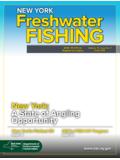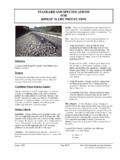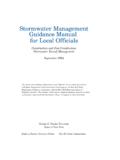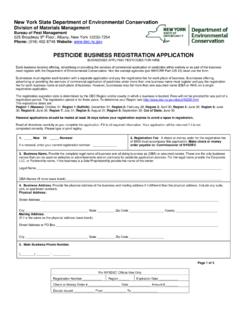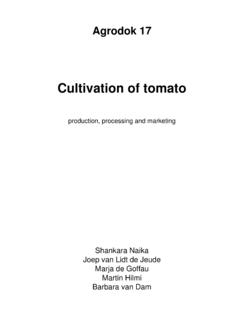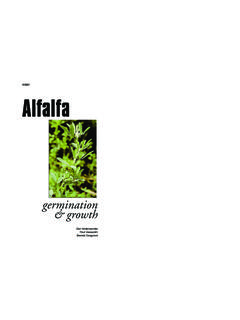Transcription of BEWARE GIAnT HOGWEED!
1 GIAnT hogweed is a VERY LARGE, non-native, invasive plant that can cause painful burns, permanent scarring and even against or breaking the plant releases sap that, combined with sunlight and perspiration, can cause a severe burn within 24 to 48 hours. Don t use a weed-whacker; sap may splatter as stems are cut. If the plant touches your skin, immediately wash the area with soap and water and protect from sunlight for 48 workers conducting hogweed control What to Do if You See GIAnT hogweed :Identify Use this brochure and see to try to make a positive identification. Many plants look similar to GIAnT Entire plant, stem, leaves, flower, seed. High resolution preferred. We ll need them to confirm E-mail DEC or call the GIAnT hogweed Hotline: If GIAnT hogweed is confirmed, DEC will contact the landowner and may visit to assess the site and discuss management options, as resources allow. GIAnT hogweed was brought to North America from the Caucasus region of Eurasia as a garden plant in the early 1900s, but escaped cultivation.
2 It spreads quickly, especially along roads and streams, taking over untended land, crowding out other plants and causing soil erosion. NYS law prohibits possession of GIAnT hogweed with the intent to sell, import, purchase, transport, introduce or more precautions at YourselfIf you decide to attempt control yourself, call for advice 1-845-256-3111 Bob KleinbergMonth 5 Day 5 Day 8 Skin burned and scarred by GIAnT hogweed sapControlling GIAnT HogweedControlling GIAnT hogweed is challenging, but it can be eradicated after repeated efforts. DEC uses the most effective methods, including: Cutting through the plant root Using herbicide Removing flowers and seed headsIt is safest to begin in the growing season when the plants are hogweed Life CycleRandy Westbrooks, Geological Survey, Plants(mid-summer) After several years of growth, the plant (late summer) Average flowering plant produces 20,000 Stems(late fall/winter) After producing seeds that germinate in following years, the plant dies, leaving stems and seed heads Out How To Identify it Protect yourself Report itDivision of Lands and ForestsForest Health and Protection21 South Putt Corners RoadNew Paltz, NY 12561 SeedlingYoung PlantOlder PlantBEWARE GIAnT hogweed !
3 Don t Touch This Plant!See for annual updatesThis institution is an equal opportunity can help!Pre-Flowering Plants(spring/summer) Leaves sprout from overwintering roots for several years until plant hogweed SITES (2014 hogweed Hotline1-845-256-3111 How To Identify GIAnT HogweedPLAnTS OFTEn MISTAkEn FOR GIAnT hogweed . THESE PLANTS MAY ALSo CAUSE additional similar plants at to 14 feet tall when floweringLeavesLobed, deeply cut, up to 5 feet acrossFlowersNumerous small white flowers cluster into a flat-topped umbrella up to 2 feet across. Late June/JulyStemHollow, ridged, up to 4 inches across, with purple blotches and coarse white hairs circling the stem, especially at the base of the leaf stalksQueen Anne s LaceShorter (1 - 3 tall) with smaller flower clusters (up to 4 across); lacy, fern-like leaves AngelicaUsually shorter (4 - 9 tall); stem smooth and waxy, green to purple (not blotched); flower cluster softball-size and shape; compound leaves made up of smaller leafletsWild ParsnipShorter (up to 5 tall); smooth stem with grooves; flower cluster yellowish-green.)
4 DOn T TOUCH! CAn CAUSE SEVERE BURnSCow ParsnipShorter (5 - 8 tall) and more slender; stem ridged, with fine hairs; green or may have a purplish hue, but not blotched; smaller, flat-topped flower cluster

